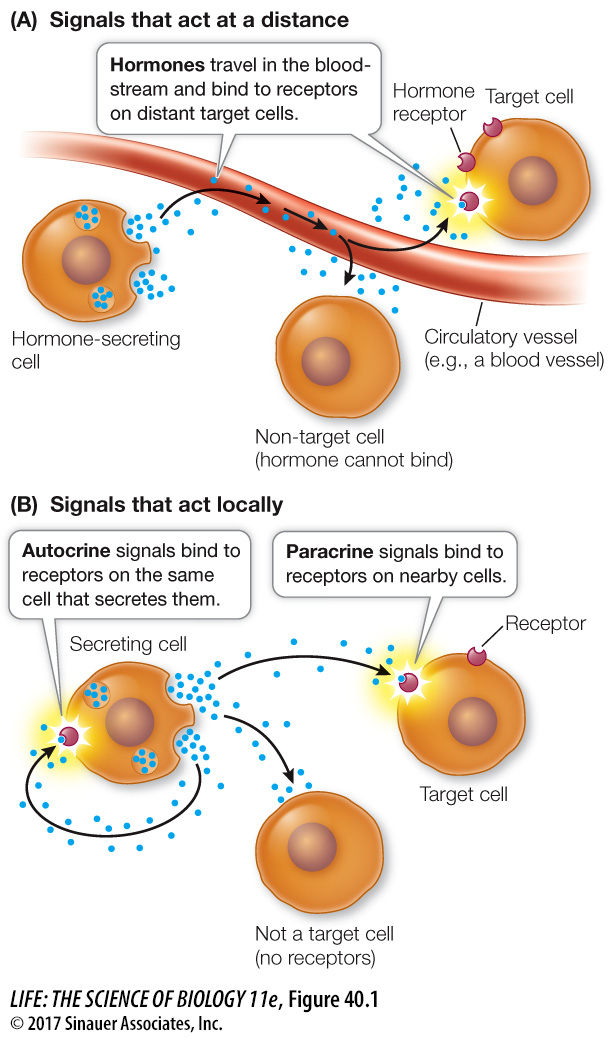Endocrine signaling can act locally or at a distance
Endocrine signals that enter the blood are called hormones (from a Greek word meaning to excite, arouse, or stimulate). Hormones activate target cells wherever they occur in the body (Figure 40.1A). You probably are familiar with several hormones, such as testosterone, estrogen, adrenaline (also called epinephrine), and insulin. Those molecules are well known, as are their sites of release and their actions.

Some endocrine signals are released in such tiny quantities, or are so rapidly inactivated by enzymes or taken up so efficiently by local cells, that they never diffuse into the blood in sufficient amounts to act on distant cells (Figure 40.1B). Because these signals affect only target cells near their release site, they are called paracrines (para, “near”). An example of a paracrine signal is histamine, one of the mediators of inflammation. The most local action an endocrine signal can have is when it binds to receptors on or in the same cell that secreted it. An autocrine signal is so named because it influences the cell that secreted it. Hormones and paracrines can have autocrine functions as a means of providing negative feedback to control their own rates of secretion.
Some endocrine cells exist as single cells within a tissue. Hormones of the digestive tract, for example, are secreted by isolated endocrine cells in the walls of the stomach and small intestine. Many hormones are secreted by aggregations of endocrine cells in secretory organs called endocrine glands. A single endocrine gland may secrete multiple hormones. Be sure you don’t confuse endocrine glands with exocrine glands. Endocrine glands secrete hormones within the body, whereas exocrine glands secrete substances through ducts to the outside of the body (sweat glands and salivary glands are examples).
Two other categories of chemical signals are neuroendocrines or neurohormones that are secreted by nerve cells and enter the circulation, and the pheromones that are released from the body of an animal to influence the behavior and physiology of other animals in its vicinity. We will discuss pheromones in Chapter 52.